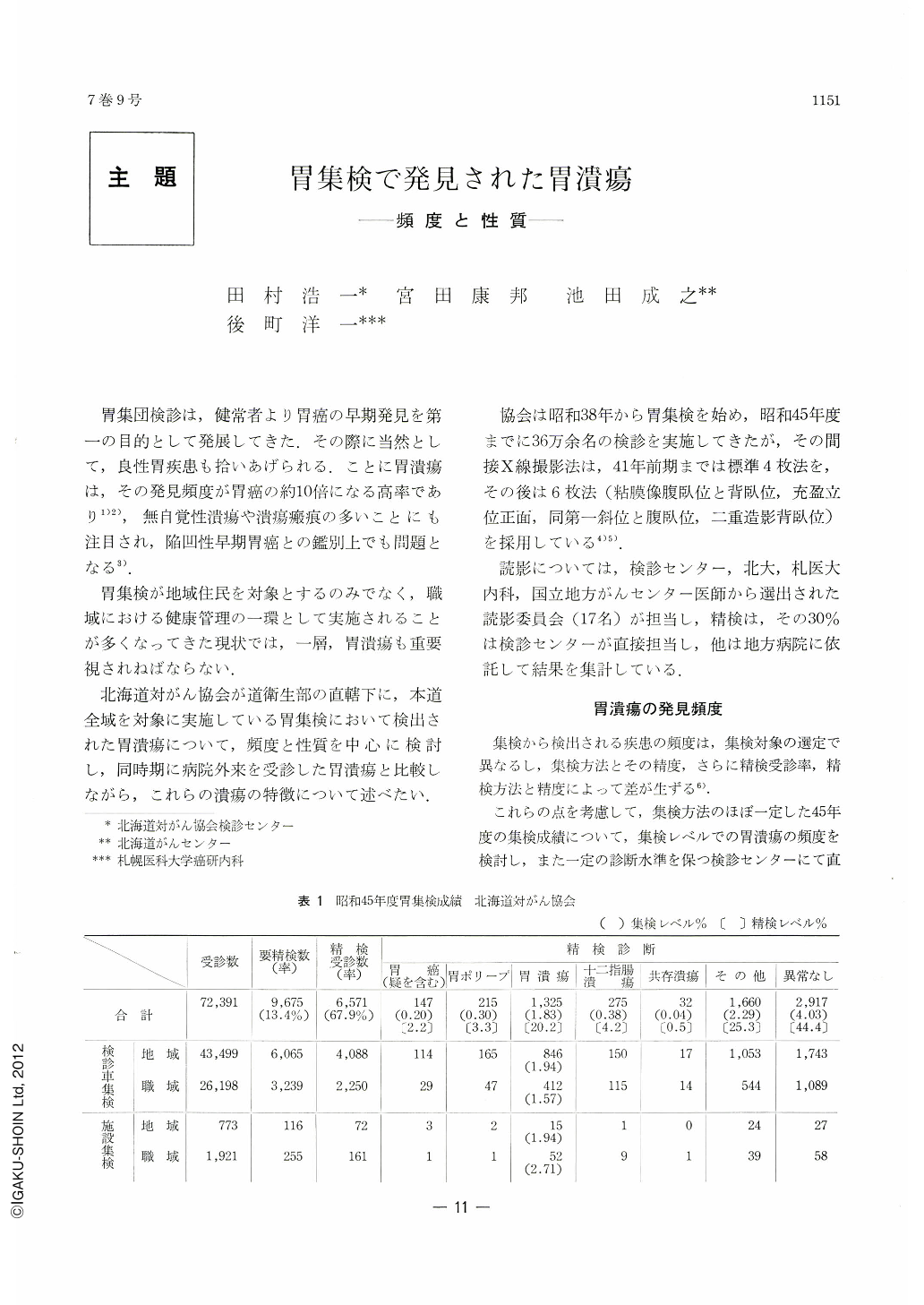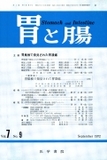Japanese
English
- 有料閲覧
- Abstract 文献概要
- 1ページ目 Look Inside
胃集団検診は,健常者より胃癌の早期発見を第一の目的として発展してきた.その際に当然として,良性胃疾患も拾いあげられる.ことに胃潰瘍は,その発見頻度が胃癌の約10倍になる高率であり1)2),無自覚性潰瘍や潰瘍瘢痕の多いことにも注目され,陥凹性早期胃癌との鑑別上でも問題となる3).
胃集検が地域住民を対象とするのみでなく,職域における健康管理の一環として実施されることが多くなってきた現状では,一層,胃潰瘍も重要視されねばならない.
The positive rate of diseases detected in gastric screening vasies according as how it is conducted. The characteristics of 424 cases of gastric ulcer found in the mass screening are correlated in this paper with those of 274 cases of gastric ulcer seen in the out-patients' clinic in our college. Gastric ulcer in the mass screening was collected not only from administrative mass survey done over such a wide region as Hokkaido but also from the screening center where 30 per cent of subsequent thorough examination are done for gastric ulcer detected at the screening.
1) Incidence. The number of examinees screened at the Society against Cancer for 1970 was 72,391 (44,077 were male, 28,314 female). The rate of persons in need of thorough check-up was 13.4 per cent, while that of persons who actually underwent detailed examination was 67.9 per cent. Incidence of gastric ulcer at this level was 1.83 per cent (2.43 for male, 0.89 for female). In occupational groups it was as high as 2.71 per cent.
The number of persons subjected to thorough checkup in the screening center for 1971 totalled 1, 769 (1,289 were male, 480 female). The incidence of gastric ulcer at the level of thorough examination was 24.0 per cent (28.4 per cent for male, 12.1 for female), with open ulcer 8.9 per cent and ulcer scar 15.1 per cent.
2) Nature. Examinees with gastric ulcer uncovered at the mass screening had previous histories of ulcer in 29.5 per cent. It was higher in out-patients' clinic (44.2 percent). Patients with open ulcer had previous history of ulcer in 39.2 per cent, while those with ulcer scar only had it in 42.0 percent. The item in the questionnaire for subjective symptoms was filled in by the examinees in 52.3 per cent, slight epigastric pain mostly accounting for them. Endoscopic observations in the stages of ulcer for the screened group showed active stage in 6.5 per cent with scarred stage in 59.7 Per cent, while in the out-patients' group the rate was 40.2 and 16.3 per cent, respectively. The proportion of ulcer in both groups was the same. Six indirect exposures currently employed at the mass screening seemed sufficient for our purpose.
As is seen from the above, in contrast with symptom free ulcer scars, there are ulcers with previous history in addition to slight, if any, subiective symptoms. They are considered as easily recurrent and intractable. How it should be dealth with at the mass screening is a question to be solved in future.

Copyright © 1972, Igaku-Shoin Ltd. All rights reserved.


